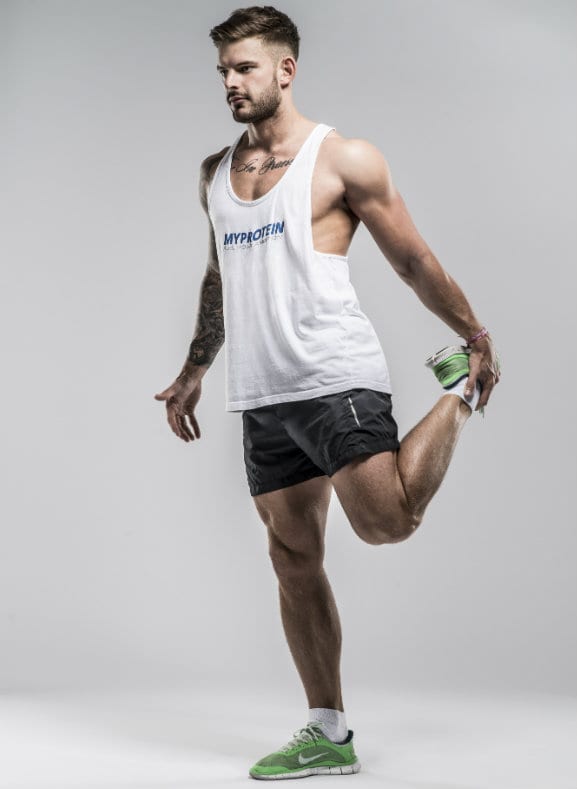Lose weight while running | Like? A Training Program
By the healthiergang writer , student of Exercise, Sport and Health Sciences
Who among you, at least once in your life, has never tried, or only remotely thought about losing weight? And which of you actually succeeded? Probably few ...
Today, everyone is constantly and desperately looking for the best program, the miraculous diet, the magic supplement that will allow you to lose weight in the shortest possible time, and why not, even with the least effort ...
We assume that if this is what you are looking for, you are already starting on the wrong foot.
There is no better program than another, but there is the subject and the individuality.
There are many, perhaps too many, the parameters and individual characteristics to take into consideration during a customized programming.
For this reason, you will never be able to find a universal program that works for everyone! If you are still looking for it, give it up ...
However, with this article we will try to give you some valuable advice to undertake an effective path aimed at slimming, which can easily adapt to everyone's needs.
Before getting to the heart of the topic, that is cardio training, we must first focus on some fundamental aspects.
1. Power supply
Needless to deny, it is the base of the pyramid in a program aimed at slimming. You can train up to 10 hours a day, you can run three New York marathons a week, but if you break through at the table, you will hardly get results.
It is not our intention to go into detail in terms of nutrition in this article, however, as for training, various strategies can also be adopted for nutrition, often opposed to each other, but which lead to common results. Follow the one you prefer, the one that is most easily sustainable for you, as long as it is based on solid scientific foundations.
2. Weight training
Many think that weight training, mainly anaerobic type, is completely useless in a weight loss program and that instead we should focus only on cardio (aerobic) training. Nothing more wrong!
If your goal is to improve your body composition, or `` burn stubborn fat '' while maintaining good lean mass, or even improve it, you can't help but train with weights too.
Without going into details, you must know that in our organism there is a sort of antagonism between myocytes (muscle cells) and adipocytes (fat cells), which '' fight '' each other for those who have to '' grab '' the circulating nutrients. Having a good muscle mass, and consequently continuously `` hungry '' cells, which capture the nutrients in the circulation, is the prerequisite for having a good metabolism, which will consequently allow us to have an excellent body composition and, why not, also an excellent blood profile (blood values such as glycemia, triglycerides ..)
I'll give you a trivial example: after you have eaten a large meal, the nutrients, once ingested, in the gastrointestinal tract, will be digested and absorbed into the bloodstream. If once in the blood, you do not have good muscle mass, and therefore cells capable of capturing, where will these nutrients go? Answer yourself ..
Having made these necessary premises, we will now go to address the central topic, or how running can help us lose weight.
3. The Race
When it comes to cardio, in the fitness environment, we mainly find two opposing schools of thought: running at low intensity over time and HIIT (High Intensity Interval Training) or high intensity interval training. Everyone is wondering which is the best: those who argue that slow jogging over time leads to consuming more calories and those who argue that with HIIT, once the training session is over, you continue to `` burn '' for several hours because of the EPOC. Who's right? Let's do some clarity.
 We assume that if you run only to consume calories, you are completely wrong. I bring you a very banal example: our body continuously consumes energy, to carry out vital functions, to breathe, to circulate the blood, to maintain homeostasis, we are talking about the basal metabolism, which constitutes most of the energy consumed in the full day (65-75%). The remaining part of energy is consumed for various daily physical activities (working, walking, running ...) From here you can very well understand that it does not make much sense to train an hour, three / four times a week, when most of the energy it is consumed during the 24 hours, whether you are sleeping, watching TV comfortably lying on the sofa, reading this article ... Energy consumed in a '' purely '' aerobic context, if you really want to know.
We assume that if you run only to consume calories, you are completely wrong. I bring you a very banal example: our body continuously consumes energy, to carry out vital functions, to breathe, to circulate the blood, to maintain homeostasis, we are talking about the basal metabolism, which constitutes most of the energy consumed in the full day (65-75%). The remaining part of energy is consumed for various daily physical activities (working, walking, running ...) From here you can very well understand that it does not make much sense to train an hour, three / four times a week, when most of the energy it is consumed during the 24 hours, whether you are sleeping, watching TV comfortably lying on the sofa, reading this article ... Energy consumed in a '' purely '' aerobic context, if you really want to know.
So why do we train? Simple, to change our metabolic state. In this context, calories count for very little, physical activity will be the tool to improve the quality of weight loss.
4. How to Improve the Metabolic Status
We assume that fatty acids are oxidized only and exclusively in the mitochondria, through a biochemical process that takes the name of beta-oxidation. You can very well understand that these blessed mitochondria play a key role in weight loss. It will therefore be our goal, through a certain type of training capable of triggering particular physiological processes, to improve mitochondrial density. Many, large and efficient mitochondria will be able to oxidize fats at any time of the day. Two / three weekly sessions will improve oxidation 24 hours a day. This is the basic principle!
At this point we have all the credentials to proceed, so how do we increase these mitochondria? We have seen that, to increase mitochondrial density, we need to undermine our mitochondria and their ability to produce energy. From this we deduce that too mild or too little intense activities (typical slow and long jog) do not put the energy production systems in sufficient crisis, and will not contribute to modify the metabolic state. At the same time, intensities that are too high would exploit very little the aerobic metabolism, shifting the activity towards a mostly anaerobic work.
5. The Training Program
As with everything, you have to find the right compromise. We will use a mixed training, a hybrid, able to exploit and combine the advantages of both. We will refer to an experimental protocol devised by Lyle McDonald, which is based on specific scientific principles. In summary, with HIIT, the important production of catecholamines mobilizes many fatty acids contained in the adipocytes (process called lipolysis), however, the high production of lactic acid (given by the very intense activity) `` traps '' them. not allowing it to enter the mitochondria to be oxidized. At this point, the smartest solution is to do light cardio immediately afterwards, at low speed and intensity, in order to lower the previously produced lactate, to somehow limit the concentration of cortisol and, at the same time, to maintain a ' high energy demand, using previously released fatty acids as fuel for the activity.
Practical example: start with a 5-minute warm-up. Once warmed up, the real workout begins with a nice and good HIIT. It consists of a continuous alternation between a basic, slower and more moderate pace (about 65% of your maximum heart rate), and faster sprints (about 85% HRmax) for a total time of 10/15 minutes. Then do about 15 minutes of slow jogging (keep a heart rate of about 110/120 bpm) in order to work in '' lipolytic '' mode.
An infinite number of different protocols can be adopted, with 30 seconds fast and 1 minute slow, 20 seconds fast and 40 slow, as can a `` pyramidal '', increasing and / or decreasing system. The modalities, the intervals and the various parameters are not written in stone. The '' secret '' is to vary. Repetition over time leads to adaptation, resulting in a lack of results. Always remember that there is no better and no worse way.
Here are a couple of example tables:
Example 2
-5 minute warm-up -1 minute basic pace -20 seconds quick sprint -1 minute basic pace -20 seconds quick sprint -1 minute basic pace -20 seconds quick sprint -1 minute basic pace -30 seconds quick sprint -1 minute basic pace -30 seconds quick sprint -1 minute basic pace -30 seconds quick sprint -1 minute basic pace -45 seconds quick sprint -1 minute basic pace -45 seconds quick pace -1 minute basic pace -45 seconds fast pace -15 minutes slow jog .
Example 2
-5 minutes warm-up -1 minute basic pace -20 seconds quick sprint -1 minute basic pace -30 seconds quick sprint -1 minute basic pace -45 seconds quick sprint -1 minute basic pace -45 seconds quick sprint -1 minute basic pace -30 seconds quick sprint -1 minute basic pace -20 seconds quick sprint -1 minute basic pace -30 seconds quick sprint -1 minute basic pace -45 seconds quick sprint -15 minutes slow jog
Also keep in mind that ...
 - These protocols are suitable for trained subjects, certainly they are not designed for the neophyte to his first approach with training.
- These protocols are suitable for trained subjects, certainly they are not designed for the neophyte to his first approach with training.
-A job done well requires a good heart rate monitor.
-It can be done in different ways: treadmill, outdoor run, elliptical.
-The frequency of training is also variable, it depends on the subject, on the age, on the recovery capacity. Be that as it may, a frequency twice a week is enough to get good results, especially if combined with 2/2 weight training sessions.
twice a week is enough to get good results, especially if combined with 2/2 weight training sessions.
-A targeted integration can prove to be very useful in these specific cases. We recommend integrating 30 g of Acetyl-L-Carnitine and a tablet of Caffeine Pro about 1 minutes before training.
-Do not forget to drink plenty of water, before starting, during training, and at the end of the session, to prevent dehydration and restore normal water and electrolyte parameters.
References
-Champe, “The basics of biochemistry”.
-Alloatti, "Physiology of man".
-McArdle, "Physiology applied to sport"
-Perry CG, et al. (2008) “High-intensity aerobic interval training increases fat and carbohydrate metabolic capacities in human skeletal muscle”.
-Hoshino D., et al. (2013) “High-intensity interval training increases intrinsic rates of mitochondrial fatty acid oxidation in rat red and white skeletal muscle”.


























